Family

 My nephew, Sean Mortensen is a man who loves a little friendly competition. That could be where his daughter, Jaydn gets her competitive nature. Sean loves sports…and machinery, or at least of the toy variety…but then, what man doesn’t. None I know of, anyway. Sean loves boating, snowmobiling, 4-wheeling, and motorcycle riding. He likes snow, as much as he does the summer sun. And the friends that he and my niece, Amanda Reed have, all feel the same way. Their love of competition has made for some amazingly great weekends, with amazingly great friends…mostly at Seminole Reservoir, but in the mountains too.
My nephew, Sean Mortensen is a man who loves a little friendly competition. That could be where his daughter, Jaydn gets her competitive nature. Sean loves sports…and machinery, or at least of the toy variety…but then, what man doesn’t. None I know of, anyway. Sean loves boating, snowmobiling, 4-wheeling, and motorcycle riding. He likes snow, as much as he does the summer sun. And the friends that he and my niece, Amanda Reed have, all feel the same way. Their love of competition has made for some amazingly great weekends, with amazingly great friends…mostly at Seminole Reservoir, but in the mountains too.
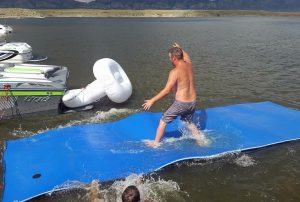 One of the latest escapades has involved water mats. I find that particularly interesting. These mats are strong enough to stay afloat with a number of people sitting, or even running on them. The friends have decided to have water mat races, with the goal being to see who can get across the mat the fastest…without falling down, of course. Sean and his friends are pretty good at water mat racing. I’m not so sure I would be, but it looks like it would be fun to try. That is the impression I get from the pictures and from his friends, anyway. I’m sure I would be a complete klutz on those mats, however.
One of the latest escapades has involved water mats. I find that particularly interesting. These mats are strong enough to stay afloat with a number of people sitting, or even running on them. The friends have decided to have water mat races, with the goal being to see who can get across the mat the fastest…without falling down, of course. Sean and his friends are pretty good at water mat racing. I’m not so sure I would be, but it looks like it would be fun to try. That is the impression I get from the pictures and from his friends, anyway. I’m sure I would be a complete klutz on those mats, however.
Sean is a great partner to Amanda, and a great dad to their daughter, Jaydn, who was born the day before his birthday, 12 years ago. Sean and Amanda bought a house a year or so ago, and they have done a lot of work on it. I think that for Sean, the coolest thing is the garage he has now, where he can work on all his toys, because after all, you can’t beat your friends in a 
 competition, if your toys aren’t in tip top shape.
competition, if your toys aren’t in tip top shape.
Sean is the kind of guy, who works hard and plays hard, and everyone who is around him and Amanda find themselves having a great time, because as their friends say, they sure know how to have a good time. And that’s what the weekend is all about, isn’t it? Great times with great friends. It doesn’t get better than that. Today is Sean’s birthday. Happy birthday Sean!! Have a great day!! We love you!!

 It’s really hard for me to believe that my grand niece, Jaydn Mortensen is twelve years old today, but she is, nevertheless. Jaydn has done a lot of living in her relatively few years. She is the only child of her parents, my niece Amanda Reed, and her significant other, Sean Mortensen, and they like giving their daughter a full life. She has never been made to feel like she is too little to be around the adults, and so, she has been four wheeling, boating, and snowmobiling with her parents and their friends.
It’s really hard for me to believe that my grand niece, Jaydn Mortensen is twelve years old today, but she is, nevertheless. Jaydn has done a lot of living in her relatively few years. She is the only child of her parents, my niece Amanda Reed, and her significant other, Sean Mortensen, and they like giving their daughter a full life. She has never been made to feel like she is too little to be around the adults, and so, she has been four wheeling, boating, and snowmobiling with her parents and their friends.  Jaydn’s family loves all kinds of outdoor sports, and so it stands to reason that Jaydn does too. I think her extensive time at Seminole Reservoir has probably turned her into a fish…so to speak. He parents spend every possible weekend at the lake, and that means lots of activities.
Jaydn’s family loves all kinds of outdoor sports, and so it stands to reason that Jaydn does too. I think her extensive time at Seminole Reservoir has probably turned her into a fish…so to speak. He parents spend every possible weekend at the lake, and that means lots of activities.
Sports aside though, I think that Jaydn’s true love…for now anyway…is horses. She has such a way with them. She loves to ride them and take care of them, and she isn’t afraid of them, even though last summer started off badly, when she was bucked off of a horse, breaking both of her arms. What a way to start the summer vacation. That didn’t deter her at all. Jaydn is very much into all things animal, and especially if it relates to the fair and rodeo. She has started showing horses, and is really quite good at it, to which her ribbons will attest. In her first horse showing, she took 4 Grand Champion, and 1 Reserve Champion in horse. She was also voted Outriders Princess last year, which is the best of the best…but then we knew that.
Every year, Jaydn gets better and better at the things she loves to do. I don’t know 
 what her future goals and dreams are, and maybe she doesn’t know either, but I think she would be a great veterinarian or some other such occupation involving animals, because she simply has a way with them. She doesn’t just love horses, although, they are her true love, but she likes goats and rabbits and other animals too. I think she just has a heart for animals in general, and it’s obvious from what I’ve seen, that they love her too. Today is Jaydn’s 12th birthday. Happy birthday Jaydn!! Have a great day!! We love you!!
what her future goals and dreams are, and maybe she doesn’t know either, but I think she would be a great veterinarian or some other such occupation involving animals, because she simply has a way with them. She doesn’t just love horses, although, they are her true love, but she likes goats and rabbits and other animals too. I think she just has a heart for animals in general, and it’s obvious from what I’ve seen, that they love her too. Today is Jaydn’s 12th birthday. Happy birthday Jaydn!! Have a great day!! We love you!!

 A baby’s first year is one filled with change. They go from being an infant to an independent little toddler…just that fast. Their parents tend to wish there was a way to slow them down just a little bit, because those infant days are gone in an instant. Still, watching the changes and the emerging personality is awesome too, and soon you find yourself simply going with the flow and enjoying the new little person your child has become.
A baby’s first year is one filled with change. They go from being an infant to an independent little toddler…just that fast. Their parents tend to wish there was a way to slow them down just a little bit, because those infant days are gone in an instant. Still, watching the changes and the emerging personality is awesome too, and soon you find yourself simply going with the flow and enjoying the new little person your child has become.
One thing that few people expect from their younger children, however, is for them to become an inspiration to their older children. Nevertheless, in the case of my grand niece, Zoey Iverson, she has become just that. Zoey’s brother, Lucas was born with Down’s Syndrome, and so is slower at things than she is, but Lucas loves his little sister, and literally follows her everywhere. That has inspired Lucas to work very hard at maneuvering. And for Zoey, that’s not a bad thing either, because she absolutely loves her brother too. Zoey brings out the very best in her brother, because Lucas wants to do everything Zoey does.
Zoey and her brother are best friends. They love spending time together and with their grandparents and uncles…especially Uncle Tucker. They love to go camping together with their parents and other family members. Zoey spends a lot of time in her swing or playpen when camping, but that doesn’t matter. She is outside, and that’s a fun place to be. I’m sure she will take after her parents in camping, fishing, and all things sporty.
One of the main things I see in Zoey though is the love she has for her brother. I have a feeling she is going to be his biggest cheerleader, best friend, and his teammate. It’s amazing to watch a younger child who sees the 
 need to take on the role of the older child, but without stepping in their older sibling’s toes and making them feel like they are incapable. I think Zoey will be that kind of child. Filled with love for her brother and never feeling like he is a burden, because he is just her brother and she loves him with all her heart. What a blessing for Lucas to have such a sister. He has a sister who encourages him, inspires him, and loves him always. It doesn’t get any better than that. I know that Zoey will be a very compassionate girl. Today is Zoey’s 1st birthday. Happy birthday Zoey!! Have a great day!! We love you!!
need to take on the role of the older child, but without stepping in their older sibling’s toes and making them feel like they are incapable. I think Zoey will be that kind of child. Filled with love for her brother and never feeling like he is a burden, because he is just her brother and she loves him with all her heart. What a blessing for Lucas to have such a sister. He has a sister who encourages him, inspires him, and loves him always. It doesn’t get any better than that. I know that Zoey will be a very compassionate girl. Today is Zoey’s 1st birthday. Happy birthday Zoey!! Have a great day!! We love you!!
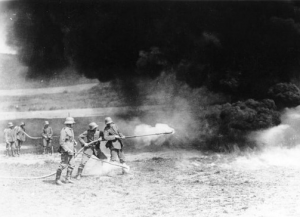 Over the centuries of life on Earth, there have been numerous wars, and numerous weapons of warfare. Yet, few could bring fear to the heart of an infantryman quicker than the Flammenwerfer. Developed by the Germans during World War I, the Flammenwerfer…or Flamethrower, in English…once lit could throw a steady stream of flames 20 to 30 feet in front of it. For the men on the ground, this meant one of two things. They could run…abandoning the relative safety of their foxhole, usually with the result of being shot down by the enemy, or they could stand their ground and be incinerated. It wasn’t much of a choice really, and most ran in the hope of escaping the machine gun fire that would undoubtedly follow the flamethrower. It was a situation of instant death…no matter which choice a soldier made…not to mention the fact that every fiber of a soldier’s being and training told them to stand their ground. This weapon took much of it toll on the soldier’s sense of bravery.
Over the centuries of life on Earth, there have been numerous wars, and numerous weapons of warfare. Yet, few could bring fear to the heart of an infantryman quicker than the Flammenwerfer. Developed by the Germans during World War I, the Flammenwerfer…or Flamethrower, in English…once lit could throw a steady stream of flames 20 to 30 feet in front of it. For the men on the ground, this meant one of two things. They could run…abandoning the relative safety of their foxhole, usually with the result of being shot down by the enemy, or they could stand their ground and be incinerated. It wasn’t much of a choice really, and most ran in the hope of escaping the machine gun fire that would undoubtedly follow the flamethrower. It was a situation of instant death…no matter which choice a soldier made…not to mention the fact that every fiber of a soldier’s being and training told them to stand their ground. This weapon took much of it toll on the soldier’s sense of bravery.
The Flammenwerfer was developed in 1915 by the Germans, and first used in battle against the Allied forces on this day, July 30, 1915 at the Battle of Hooge. Eleven days before that battle, British infantry had captured the German occupied village of Hooge, located near Ypres in Belgium, by detonating a large mine. Using the flamethrowers, along with machine guns, trench mortars and hand grenades, the Germans got their positions 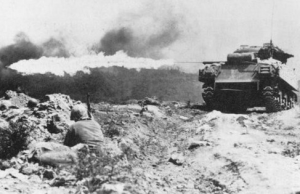 back on July 30, 1915. They broke through enemy front lines with ease, pushing the British forces back to their second trench. Only a few men were lost to actual burns, but a British officer was heard to explain that the weapons had a great demoralizing effect, and when added to the assault of the other powerful weapons, they proved mercilessly efficient at Hooge. I suppose that is true. I can think of few things more demoralizing for a soldier than running from your position in fear. Soldiers don’t take kindly to fear…or running away.
back on July 30, 1915. They broke through enemy front lines with ease, pushing the British forces back to their second trench. Only a few men were lost to actual burns, but a British officer was heard to explain that the weapons had a great demoralizing effect, and when added to the assault of the other powerful weapons, they proved mercilessly efficient at Hooge. I suppose that is true. I can think of few things more demoralizing for a soldier than running from your position in fear. Soldiers don’t take kindly to fear…or running away.
During World War I, the Germans were the only ones to use such a weapon, and not because it was difficult to make. So, why didn’t the Allies us it too? It was one of the great puzzles that emerged from World War I. Why? The British made three attempts with larger, more unwieldy prototypes: the smallest one was equal in size to the German Grof, which the enemy had almost abandoned by 1916. The French were more persistent, and by 1918 had at least seven companies trained in using flamethrowers, and still the use of the weapon never progressed to the same level as that of the German army.
By World War II, however, the flamethrower was the most dramatic hand weapon used by any Army and the most effective for its purpose. But it was during the 20th century that engineers and scientists placed flames 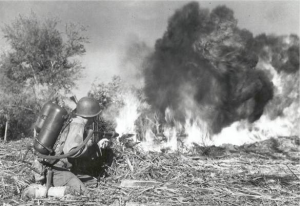 under advanced technological control in an effort to make flamethrowers portable, reliable and reasonably safe…for the user anyway. Prior to that the words “friendly fire” had a second meaning in that flamethrowers could kill the operator while he was doing his best to kill the enemy with it. The result of this new technology was a device with as much psychological impact as it’s lethality impact. That was the chief reason why the United States, Great Britain and other world powers used the flamethrower from World War I through the Vietnam War. Even today, Russia still has flamethrowers in its inventory. I guess it is an important weapon, but for most of us, I think that just the thought of using it on someone would make us seriously ill.
under advanced technological control in an effort to make flamethrowers portable, reliable and reasonably safe…for the user anyway. Prior to that the words “friendly fire” had a second meaning in that flamethrowers could kill the operator while he was doing his best to kill the enemy with it. The result of this new technology was a device with as much psychological impact as it’s lethality impact. That was the chief reason why the United States, Great Britain and other world powers used the flamethrower from World War I through the Vietnam War. Even today, Russia still has flamethrowers in its inventory. I guess it is an important weapon, but for most of us, I think that just the thought of using it on someone would make us seriously ill.

 My grand niece, Raelynn Masterson is turning 13 today. Turning 13 is an exciting, mixed up, trying time in that persons life, but Raelynn…or Rae, as she is known to her family, is taking it pretty much in stride. She has always been easy going, and maybe it’s that style that lets her make a smooth transition into the teenage years. The journey from child to young adult is filled with ups and downs, but Raelynn doesn’t seem to be too shook up about it…unlike her mom, my niece, Dustie Masterson. Dustie is having a bit of a hard time believing that her first born…while no longer a baby, yet always her baby, is growing up so very fast. Dustie calls this by far their “biggest adventure” yet. I think that any parent of children over the age of 13 knows exactly what Dustie means. I don’t think any parent is truly ready for their kids to grow up.
My grand niece, Raelynn Masterson is turning 13 today. Turning 13 is an exciting, mixed up, trying time in that persons life, but Raelynn…or Rae, as she is known to her family, is taking it pretty much in stride. She has always been easy going, and maybe it’s that style that lets her make a smooth transition into the teenage years. The journey from child to young adult is filled with ups and downs, but Raelynn doesn’t seem to be too shook up about it…unlike her mom, my niece, Dustie Masterson. Dustie is having a bit of a hard time believing that her first born…while no longer a baby, yet always her baby, is growing up so very fast. Dustie calls this by far their “biggest adventure” yet. I think that any parent of children over the age of 13 knows exactly what Dustie means. I don’t think any parent is truly ready for their kids to grow up.
 Raelynn is the big sister to Matt and Anna, and younger half-sister to Christina, who lives in Colorado. For some time now, Raelynn has been the “little mom” to her younger siblings. She is helpful to her mom and dad, and doesn’t present them with a ton of drama…unless her younger brother and sister provoke her, that is. She is so motherly sometimes that her mom has to remind her that in reality she is not the mom, but that often happens with older children. She is a kind person too, so I’m sure that keeps sibling relationships on an even keel. Many people really have no ability to empathize with others, but Raelynn is compassionate and has an understanding of people that surpasses her years on this earth.
Raelynn is the big sister to Matt and Anna, and younger half-sister to Christina, who lives in Colorado. For some time now, Raelynn has been the “little mom” to her younger siblings. She is helpful to her mom and dad, and doesn’t present them with a ton of drama…unless her younger brother and sister provoke her, that is. She is so motherly sometimes that her mom has to remind her that in reality she is not the mom, but that often happens with older children. She is a kind person too, so I’m sure that keeps sibling relationships on an even keel. Many people really have no ability to empathize with others, but Raelynn is compassionate and has an understanding of people that surpasses her years on this earth.
These days Raelynn is into science and boys…and not necessarily in that order. I suppose that might be viewed as an odd combination, but it works for her. The Science Zone is a really big deal here in town, and she loves going there. They even have summer classes for the kids. Dustie signed Raelynn up for three this year. The first one was a Dissection Class, and is definitely the one Raelynn likes the least…probably because of her love 
 of animals. The second class was on Water, which she really enjoyed, but it was the class where she was able to help the instructor with the animals that really did it for Raelynn. When her mom picked Raelynn up, she was excitedly telling her that the Iguana and the Science Zone doesn’t like anyone, but really took to Raelynn. She was so happy about that. Raelynn loves to read, and is keep a journal, which is seriously private, of course. Raelynn is such a sweet girl, and a great blessing to her family. Today is Raelynn’s birthday. Happy birthday Raelynn!! Have a great day!! We love you!!
of animals. The second class was on Water, which she really enjoyed, but it was the class where she was able to help the instructor with the animals that really did it for Raelynn. When her mom picked Raelynn up, she was excitedly telling her that the Iguana and the Science Zone doesn’t like anyone, but really took to Raelynn. She was so happy about that. Raelynn loves to read, and is keep a journal, which is seriously private, of course. Raelynn is such a sweet girl, and a great blessing to her family. Today is Raelynn’s birthday. Happy birthday Raelynn!! Have a great day!! We love you!!

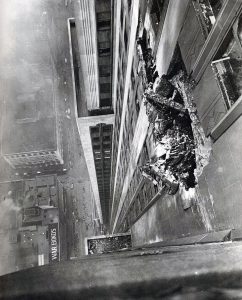 World War II saw the shooting down of more of our military planes that most of us want to think about. We saw the loss by planes being shot down, but also transport planes lost, and planes lost in training accidents. The loss was felt deeply. I realize that accidents are a fact of life and during wartime they are probably more likely to happen than other times, but some accidents just have a bigger impact on our emotions than others. Such was the case of the accident of July 28, 1945.
World War II saw the shooting down of more of our military planes that most of us want to think about. We saw the loss by planes being shot down, but also transport planes lost, and planes lost in training accidents. The loss was felt deeply. I realize that accidents are a fact of life and during wartime they are probably more likely to happen than other times, but some accidents just have a bigger impact on our emotions than others. Such was the case of the accident of July 28, 1945.
That morning, the skies over New York City were filled with heavy fog. A B-52 Mitchell Bomber with two pilots and one passenger aboard, en route from New Bedford, Massachusetts, to LaGuardia Airport in New York City, was diverted because the fog was so thick. As it came into the metropolitan area on that Saturday morning, air-traffic controllers instructed the plane to fly to Newark Airport instead.
The new flight plan took the plane over Manhattan. The pilots were warned that the Empire State Building, the tallest building in the city at that time, was not visible. In an effort to gain better visibility, the pilot of the bomber was flying relatively slowly and quite low. As the plane came in straight at the Chrysler Building in midtown, it swerved to avoid the collision, thereby setting it in a collision path with the Empire State Building, hitting the building near the 79th floor. The fuel tanks exploded, filling the building with flames down to the 75th floor, and out of the building at the impact site. One engine from the plane went straight through the building and landed in a penthouse apartment across the street. Other plane parts were embedded in and on top of nearby buildings. The other engine snapped an elevator cable while at least one woman was riding in the elevator car. The emergency auto brake saved the woman from crashing to the bottom, but the engine fell down the shaft and landed on top of it. Thankfully, the rescuers pulled the woman from the elevator, thereby saving her life.
July 28th was a Saturday that year, so there were fewer people in the building. The loss of life in the Empire State Building was only 11 people, but death came by way of horrific burns from the jet fuel, or being thrown from the building. The 11 people killed were all workers from the War Relief Services Department of the National Catholic Welfare Conference…the office that the plane crashed into on that fateful day. The other three deaths were the two pilots and their passenger. The crash left an 18 by 20 foot hole in the side of the Empire State Building. The building itself, stood however, because, this plane was nowhere near the size of the planes 
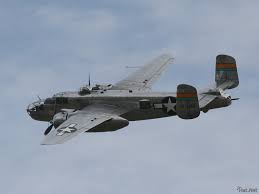 that took down the World Trade Center in Manhattan on Sept 11, 2001, an event that probably seemed eerily similar to those who were alive and living in New York City on July 28, 1945. The crash caused one million dollars in damage at that time, which would equate to about 10.5 million these days. For many people this was an event, much like 9-11 that would never be forgotten, even though it was not a terrorist attack, but rather a tragic accident.
that took down the World Trade Center in Manhattan on Sept 11, 2001, an event that probably seemed eerily similar to those who were alive and living in New York City on July 28, 1945. The crash caused one million dollars in damage at that time, which would equate to about 10.5 million these days. For many people this was an event, much like 9-11 that would never be forgotten, even though it was not a terrorist attack, but rather a tragic accident.
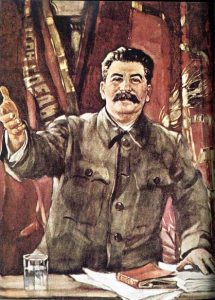 Imagine being in a country where being afraid is a crime. I’m sure you are wondering how that is possible…in any country, but I assure you, it is. That was the case on this day, July 27, 1943 in Russia. Joseph Stalin was the premier and dictator of Russia at that time in history, and Adolf Hitler was the dictator of Germany. The Germans were advancing into Russian territory, and Stalin was determined to stop them, no matter the cost.
Imagine being in a country where being afraid is a crime. I’m sure you are wondering how that is possible…in any country, but I assure you, it is. That was the case on this day, July 27, 1943 in Russia. Joseph Stalin was the premier and dictator of Russia at that time in history, and Adolf Hitler was the dictator of Germany. The Germans were advancing into Russian territory, and Stalin was determined to stop them, no matter the cost.
Hitler had become quite bold because of the early successes against Russia in his goal of taking Leningrad and Stalingrad. The attack on Stalingrad proved, however, that the Russians had superior manpower and it was an enormous drain on German resources and troop strength. The Germans were repulsed by a fierce Soviet fighting force, that had been reinforced with more men and materials. Hitler made the decision to turn his sights to Leningrad.
Stalin needed to make sure his force wouldn’t back down…no matter what happened. The motivation to stand 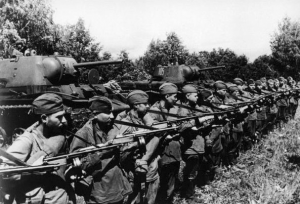 their ground needed to apply to both officers and civilians alike, or he was sure that Leningrad would be lost. That was when Stalin decided to put order number 227 into effect. So, what was order number 227? The order declared, “Panic makers and cowards must be liquidated on the spot. Not one step backward without orders from higher headquarters! Commanders…who abandon a position without an order from higher headquarters are traitors to the Fatherland.” Basically the order said that no one…not one person would be a coward. The order became known as the “not one step backward” order. The military personnel, as well as civilians were forced to fight for their city.
their ground needed to apply to both officers and civilians alike, or he was sure that Leningrad would be lost. That was when Stalin decided to put order number 227 into effect. So, what was order number 227? The order declared, “Panic makers and cowards must be liquidated on the spot. Not one step backward without orders from higher headquarters! Commanders…who abandon a position without an order from higher headquarters are traitors to the Fatherland.” Basically the order said that no one…not one person would be a coward. The order became known as the “not one step backward” order. The military personnel, as well as civilians were forced to fight for their city.
I think I can understand what Stalin was doing, but it seems such a drastic measure to take. Still, while some  people might fight the enemy to the end, others might decide that their city wasn’t worth their life. If the penalty for backing off was instant liquidation, then standing and fighting became the only way to have a chance at life. In my opinion, that as far as ways to gain loyalty goes, this was not the best of plans, but then forced loyalty seldom is. Still, one must never underestimate the love a patriot feels for their country. The “not one step backward” order was virtually unnecessary, in that on the day the order was issued, the Russian peasants and other supporters in the Leningrad region killed a German official, Adolf Beck, whose job was to send agricultural products from occupied Russia to Germany and to German troops. The Russian patriots also set fire to the granaries and barns in which the stash of agricultural products was stored before transport. A partisan pamphlet issued an order of its own: “Russians! Destroy the German landowners. Drive the Germans from the land of the Soviets!” I guess Stalin had misjudged his peoples’ loyalty.
people might fight the enemy to the end, others might decide that their city wasn’t worth their life. If the penalty for backing off was instant liquidation, then standing and fighting became the only way to have a chance at life. In my opinion, that as far as ways to gain loyalty goes, this was not the best of plans, but then forced loyalty seldom is. Still, one must never underestimate the love a patriot feels for their country. The “not one step backward” order was virtually unnecessary, in that on the day the order was issued, the Russian peasants and other supporters in the Leningrad region killed a German official, Adolf Beck, whose job was to send agricultural products from occupied Russia to Germany and to German troops. The Russian patriots also set fire to the granaries and barns in which the stash of agricultural products was stored before transport. A partisan pamphlet issued an order of its own: “Russians! Destroy the German landowners. Drive the Germans from the land of the Soviets!” I guess Stalin had misjudged his peoples’ loyalty.
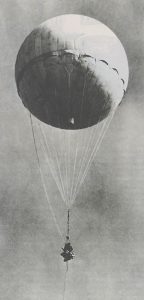 I suppose a true World War II history buff might know about some of the strange war stories there are out there, and I rather thought I was becoming a World War II history buff, but I had never heard of the Japanese Balloon Bombs. I can’t imagine how a nation could send a random bomb over another nation, not knowing where it will land, or who it will kill…but then, the evil we have seen in the 21st century has proven to be very much the same. I guess there really is nothing new under the sun. Where evil exists, horrible things happen. Such was the case with the Japanese Balloon Bombs. The Japanese were an evil nation at that time, and they didn’t care who they hurt. in 1945, a Japanese Balloon Bomb landed in rural Oregon, ad killed six people . As it turns out, these were the only World War II combat casualties within the continental 48 states. Apparently, the accuracy of the balloon bombs left something to be desired…thankfully.
I suppose a true World War II history buff might know about some of the strange war stories there are out there, and I rather thought I was becoming a World War II history buff, but I had never heard of the Japanese Balloon Bombs. I can’t imagine how a nation could send a random bomb over another nation, not knowing where it will land, or who it will kill…but then, the evil we have seen in the 21st century has proven to be very much the same. I guess there really is nothing new under the sun. Where evil exists, horrible things happen. Such was the case with the Japanese Balloon Bombs. The Japanese were an evil nation at that time, and they didn’t care who they hurt. in 1945, a Japanese Balloon Bomb landed in rural Oregon, ad killed six people . As it turns out, these were the only World War II combat casualties within the continental 48 states. Apparently, the accuracy of the balloon bombs left something to be desired…thankfully.
The idea of a balloon bomb was to send in a bomb that was silent. The problem is that balloons are hard to control. They go with the flow of the wind currents, so you don’t know where they will land. Then again, the Japanese were at war with the world, so they really didn’t care where the balloons would land. The six people who were killed by the Fu-Go or fire-balloon bomb, as they were called, were a Sunday School teacher Elyse Mitchell (and her unborn child), her 13 and 14 year old students, Jay Gifford, Edward Engen, Sherman Shoemaker, Dick Patzke, all of whom were killed instantly, when the bomb exploded. Dick Patzke’s sister, Joan was severely burned, and died moments later. The group had stopped for a moment, because Elyse Mitchell was feeling ill, and while her husband, Reverend Archie Mitchell talked with construction workers in the area, the six victims went to investigate a balloon they saw. It would prove to be a fatal mistake. The group had been going on a Saturday afternoon picnic near Klamath Falls, Oregon. They had only walked about 100 yards from the car. One of the road-crew workers, Richard Barnhouse, said “There was a terrible explosion. Twigs flew through the air, pine needles began to fall, dead branches and dust, and dead logs went up.”
Made of rubberized silk or paper, each balloon was about 33 feet in diameter. Barometer-operated valves released hydrogen if the balloon gained too much altitude or dropped sandbags if it flew too low. The balloons were filled with 19,000 cubic feet of hydrogen and the jet stream drew them eastward. They were designed to travel across the Pacific to North America, where they would drop incendiary devices or anti-personnel explosives. I would think the hydrogen alone would make a horrible bomb, but attached to the  balloon was the actual bomb. The Japanese released an estimated 9,000 fire balloons during the last months of World War II. At least 342 reached the United States, with some drifting as far as Nebraska. Some were shot down. Some caused minor damage when they landed, but no injuries. One hit a power line and blacked out the nuclear-weapons plant at Hanford, Washington. But the only known casualties from the 9,000 balloons…and the only combat deaths from any cause on the U S mainland were the five kids and their Sunday school teacher going to a picnic. What a valiant victory for the Japanese that was.
balloon was the actual bomb. The Japanese released an estimated 9,000 fire balloons during the last months of World War II. At least 342 reached the United States, with some drifting as far as Nebraska. Some were shot down. Some caused minor damage when they landed, but no injuries. One hit a power line and blacked out the nuclear-weapons plant at Hanford, Washington. But the only known casualties from the 9,000 balloons…and the only combat deaths from any cause on the U S mainland were the five kids and their Sunday school teacher going to a picnic. What a valiant victory for the Japanese that was.
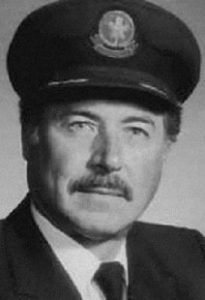
 Plane crashes are always tragic events. The loss of life and property is devastating. Sometimes, however, a pilot and his crew are able to pull off a landing in unbelievable circumstances. Something like that leaves everyone from the passengers, families, the NTSB, and the world scratching their heads in disbelief. Years ago I watched a movie about just such a flight. The flight was Air Canada Flight 143. A couple of days ago, I saw that it was the 33rd anniversary of that flight which occurred on July 23, 1983, and I thought about what a miracle that whole situation was. Canada Air had just made the conversion from pounds of fuel to kilograms of fuel. Unfortunately, as is often the case in these types of conversions, things were not converting as smoothly as the airline had hoped. On 22 July 1983, Air Canada’s Boeing 767, registered as C-GAUN, c/n 22520/47, from Toronto to Edmonton where it underwent routine checks. The next day, it was flown to Montreal. Following a crew change, it departed Montreal as Flight 143 for the return trip to Edmonton via Ottawa, with Captain Robert (Bob) Pearson and First Officer Maurice Quintal at the controls. The crew had been somewhat leery of taking off with the fuel indicator taped off as inoperable. It would seem logical to most of us that Air Canada should have waited until all systems were operable before using the plane, but that was not the case.
Plane crashes are always tragic events. The loss of life and property is devastating. Sometimes, however, a pilot and his crew are able to pull off a landing in unbelievable circumstances. Something like that leaves everyone from the passengers, families, the NTSB, and the world scratching their heads in disbelief. Years ago I watched a movie about just such a flight. The flight was Air Canada Flight 143. A couple of days ago, I saw that it was the 33rd anniversary of that flight which occurred on July 23, 1983, and I thought about what a miracle that whole situation was. Canada Air had just made the conversion from pounds of fuel to kilograms of fuel. Unfortunately, as is often the case in these types of conversions, things were not converting as smoothly as the airline had hoped. On 22 July 1983, Air Canada’s Boeing 767, registered as C-GAUN, c/n 22520/47, from Toronto to Edmonton where it underwent routine checks. The next day, it was flown to Montreal. Following a crew change, it departed Montreal as Flight 143 for the return trip to Edmonton via Ottawa, with Captain Robert (Bob) Pearson and First Officer Maurice Quintal at the controls. The crew had been somewhat leery of taking off with the fuel indicator taped off as inoperable. It would seem logical to most of us that Air Canada should have waited until all systems were operable before using the plane, but that was not the case.
The flight seemed to be going smoothly, but about half way between Montreal and Edmonton, at an altitude on 41,000 feet, the aircraft’s cockpit warning system sounded, indicating a fuel pressure problem on the aircraft’s left side. Assuming a fuel pump had failed, the pilots turned it off, since gravity should feed fuel to the aircraft’s two engines. In most situations, that would have worked, but when the plane was fueled, the technician failed to accurately convert the fuel from pounds to kilograms, and the plane had run out of fuel. Running out of fuel  in a small plane, flying at much lower altitudes has been known to get people killed, but this was a Boeing 767, and it was at an altitude of 41,000 feet. This had all the makings of a disaster…but somehow, that was not what happened. In this case, the event would prove to be the finest hour for the pilot and crew.
in a small plane, flying at much lower altitudes has been known to get people killed, but this was a Boeing 767, and it was at an altitude of 41,000 feet. This had all the makings of a disaster…but somehow, that was not what happened. In this case, the event would prove to be the finest hour for the pilot and crew.
The passengers on this plane had the unusual advantage of having at the controls, a pilot who was an experienced glider pilot. Now, as you know gliders have no fuel in them. You are pulled into the air by another plane and then released to glide in for a landing. That’s an easy enough task for a trained glider pilot in a glider plane, but this was a modern day, wide body jet. The idea of gliding this plane in for a safe landing was…well, unheard of. Robert “Bob” Pearson was that pilot, and with the help of his crew and an air traffic controller, he safely glided the plane into an abandoned Royal Canadian Air Force airstrip that was being used as a drag strip…at the very moment of the landing of the plane. The men could not see that, however, until they were almost on top of the people. Thankfully, the people on the runway saw the plane and got out of the way.
The crew had hoped to make Winnipeg, but with the best glide speed and the rate of descent, there was no way. Then, Quintal remembered Gimli, and the abandoned strip became their last hope. They were too high for it, so Pearson performed a slip, which is a glide maneuver to increase drag, causing the plane to lose altitude quickly. To add to the problem, the nose gear came down, but did not lock as the rest of the gear had. Could things have been more dire? In the end, Captain Pearson executed the landing perfectly, in spite of all of the problems, and the fact that the Winnipeg Sports Car Club was on the field with everything needed to assist in 
 this emergency, the plane landed without a single death in the plane or on the ground, and the fuel starvation scenario became part of the pilots training in their simulators. The first pilots to try the program in the simulator all crashed, and believed that it was an impossible scenario, until they were told that it had happened, and that the pilot landed safely. The flight has since been dubbed the Gimli Glider. And, that’s a miracle for the books.
this emergency, the plane landed without a single death in the plane or on the ground, and the fuel starvation scenario became part of the pilots training in their simulators. The first pilots to try the program in the simulator all crashed, and believed that it was an impossible scenario, until they were told that it had happened, and that the pilot landed safely. The flight has since been dubbed the Gimli Glider. And, that’s a miracle for the books.
 If I tell you that there exists in this world, a children’s railway, would you think of the Orphan Train, bringing children out West for adoption into families there? Or would you think of some kind of forced child labor on the railways? Either way…you would be wrong. The Children’s Railway was started in Soviet Russia in 1932. The concept is a unique one. The idea was to teach teenaged children to build and run a railroad as a way of learning the railroad trade. It was an extracurricular activity that was voluntary. Things like that aren’t offered in this country…at least not that I’m aware of. Nevertheless, I think my grandfather, Allen Luther Spencer might have enjoyed that, had it been offered in his time. I also think that my cousin by marriage, James Forseen, might have loved that since he has always loved trains, and managed to land a job with the railroad. He loved them so much that he had to have one in the wedding photos when he
If I tell you that there exists in this world, a children’s railway, would you think of the Orphan Train, bringing children out West for adoption into families there? Or would you think of some kind of forced child labor on the railways? Either way…you would be wrong. The Children’s Railway was started in Soviet Russia in 1932. The concept is a unique one. The idea was to teach teenaged children to build and run a railroad as a way of learning the railroad trade. It was an extracurricular activity that was voluntary. Things like that aren’t offered in this country…at least not that I’m aware of. Nevertheless, I think my grandfather, Allen Luther Spencer might have enjoyed that, had it been offered in his time. I also think that my cousin by marriage, James Forseen, might have loved that since he has always loved trains, and managed to land a job with the railroad. He loved them so much that he had to have one in the wedding photos when he  married my cousin Dani Byer Forseen. Just imagine James, if you could have worked on a railroad in high school!!
married my cousin Dani Byer Forseen. Just imagine James, if you could have worked on a railroad in high school!!
As I said, the children’s railway was a phenomenon that originated in the USSR. The first Children’s Railway opened in Gorky Park in Moscow, on July 24, 1932. It was a greatly developed activity in Soviet times. By the time the USSR broke up, there were 52 children’s railways in existence in that country. Many children’s railways are still functioning in post-Soviet states and in Eastern Europe, so obviously this is an activity that has taken off…and imagine the kids who would stay out of trouble if they fell in love with railroad work. I can envision the kids having such a great time running the railroad that they would never have the time or the inclination to get into trouble or into gangs. Their imagination would be too busy.
The children’s railway has come so far that many of them exhibit railway technology not seen anymore on the  main lines and they can be seen as heritage railways. Even though a few exceptions exist, most of the children’s railways that were built in the communist block have a track gauge of at least 600 mm (1 feet 11 5/8 inches) and can carry full size narrow gauge rolling stock. Of course, for the sake of safety and training purposes, the children’s railways are all run under the supervision of adult railroad workers, but what better way for things to be done. The children’s railways in existence these days are mostly for the purpose of tourism, but I suppose that if necessary, they could be used for other reasons. Whatever their purpose is today, I think the Children’s Railways sound like a very cool idea.
main lines and they can be seen as heritage railways. Even though a few exceptions exist, most of the children’s railways that were built in the communist block have a track gauge of at least 600 mm (1 feet 11 5/8 inches) and can carry full size narrow gauge rolling stock. Of course, for the sake of safety and training purposes, the children’s railways are all run under the supervision of adult railroad workers, but what better way for things to be done. The children’s railways in existence these days are mostly for the purpose of tourism, but I suppose that if necessary, they could be used for other reasons. Whatever their purpose is today, I think the Children’s Railways sound like a very cool idea.

